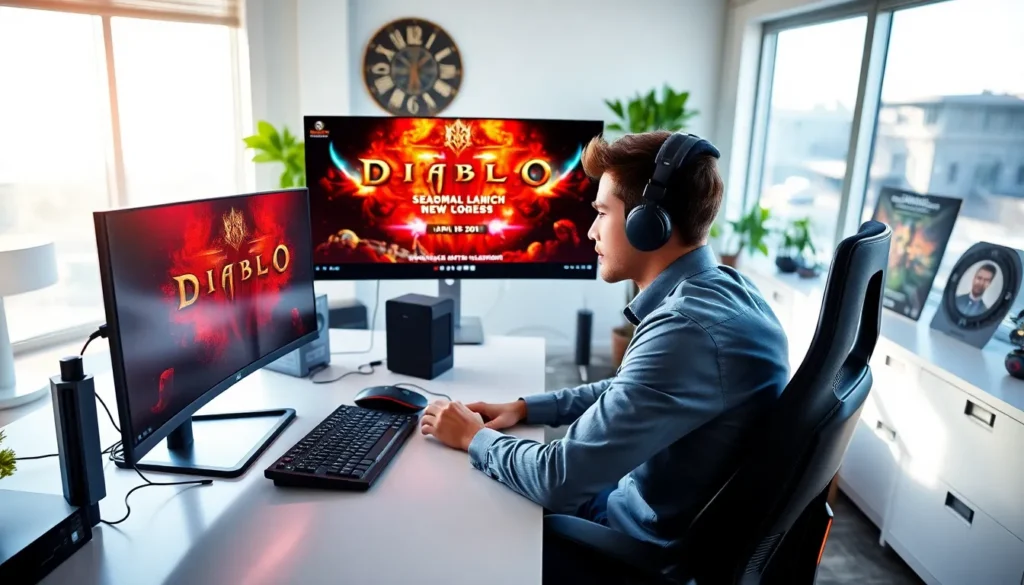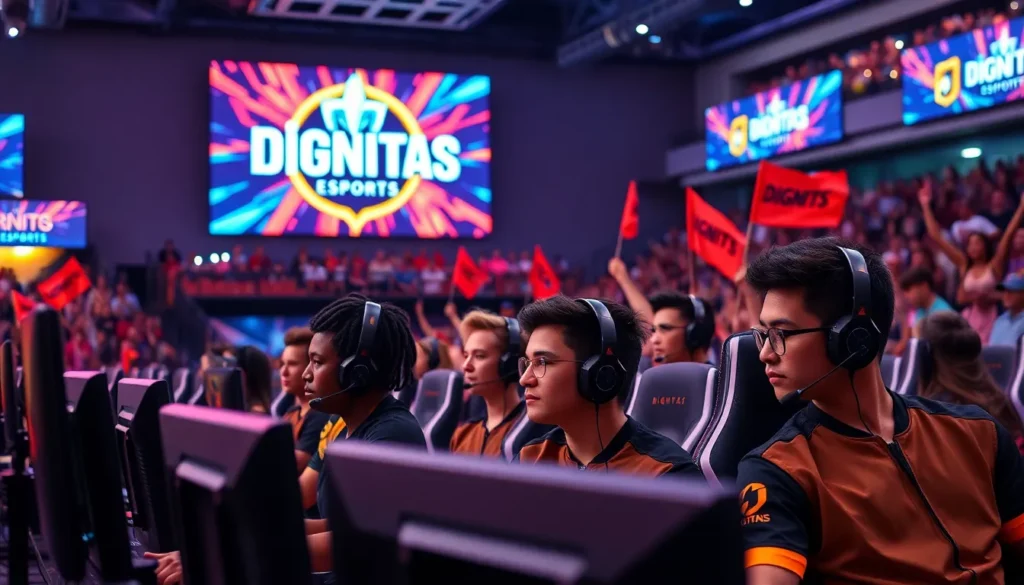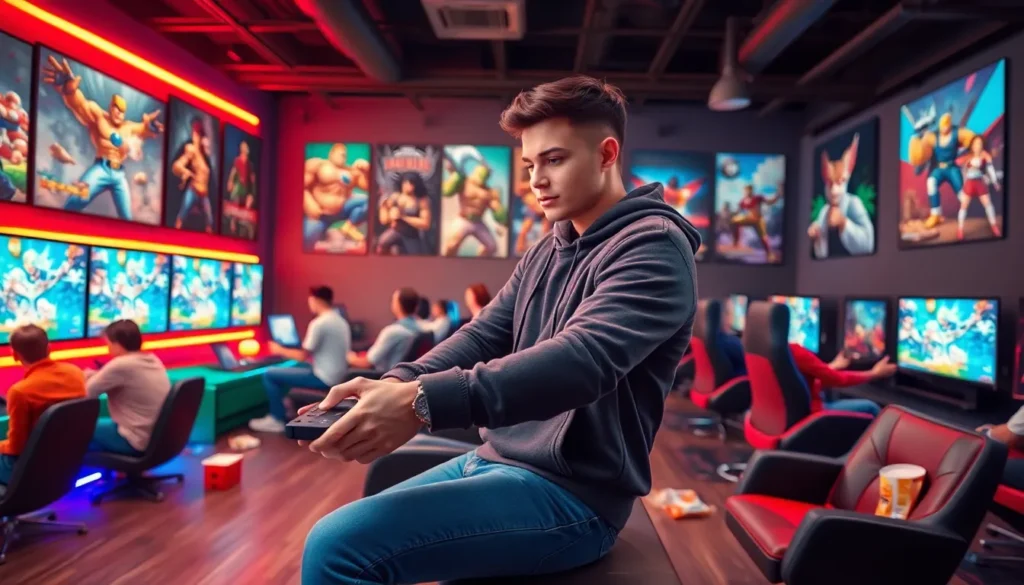In a world where gaming and military strategy collide, the US Army has leveled up in an unexpected way—through esports. Forget the dusty old recruitment posters; today’s soldiers are finding their calling in the virtual battlegrounds of popular games. With a mission to connect with a younger audience, the Army is trading in camouflage for gaming headsets, proving that teamwork and strategy aren’t just for the battlefield but for the gaming arena too.
Table of Contents
ToggleOverview of US Army Esports
The US Army Esports program serves as a bridge between military engagement and gaming. Established in 2018, this program promotes the Army’s values through competitive gaming. Participants represent the Army in various video game tournaments, enhancing visibility within the gaming community.
Competitive titles like Call of Duty, Fortnite, and Rocket League attract a diverse audience. Players showcase teamwork and communication skills, mirroring essential military operations. Engaging with the youth, the Army utilizes platforms like Twitch and social media to connect directly with gamers.
Esports events feature not only competitive play but interactive experiences for audiences. Fans can engage with Army representatives, gaining insights into military life and career opportunities. This direct interaction fosters a sense of community and understanding regarding Army missions.
The program highlights the importance of mental agility, strategy, and quick decision-making. Such skills resonate well within the esports environment, aligning closely with military training. By integrating esports into recruitment strategies, the Army moves beyond traditional methods to appeal to tech-savvy generations.
Funding supports initiatives, sponsorships, and the development of player talent. The Army collaborates with various organizations, reinforcing the commitment to support competitive esports. A focus on disciplines helps cultivate essential skills among recruits, ultimately benefiting military operations.
Through this innovative approach, the US Army Esports program positions itself at the forefront of modern recruitment efforts. The merging of gaming culture and military strategy presents a unique opportunity to engage with younger audiences. Online interactions provide a platform for discussion about career paths in the Army, effectively reaching potential recruits.
History and Development
The US Army Esports program has evolved significantly since its inception. Engaging younger audiences through gaming reflects a strategic adaptation to modern recruitment techniques.
The Formation of US Army Esports
Established in 2018, the program was launched to connect with tech-savvy generations and bridge the gap between military service and gaming culture. Promoting teamwork and strategy, the program encourages participation in competitive gaming events. The Army recognized that esports could serve as a powerful tool in reaching a wider audience, enhancing its outreach efforts. By cultivating an online presence on platforms like Twitch, the Army creates a space for interactive engagement with potential recruits.
Key Milestones
Several key milestones have marked the program’s development. In 2019, the Army participated in its first major esports tournament, showcasing its commitment to the gaming community. Growth continued in 2020 as the Army expanded its presence across multiple gaming titles, including Call of Duty and Fortnite. Participation in high-profile events brought national attention, emphasizing the importance of collaboration and communication within esports. As of 2023, the Army’s esports initiatives continue to thrive, attracting diverse gamers and reinforcing the connection between military life and competitive play.
Team Structure and Game Selection
The US Army Esports program features a strategic team structure that reflects military values and emphasizes competitive integrity. Each team is made up of skilled players who excel in various games, enhancing the Army’s outreach efforts.
Game Titles Represented
Popular game titles such as Call of Duty, Fortnite, and Rocket League dominate the Army’s competitive roster. These titles not only attract a wide audience but also provide diverse gameplay experiences. Tournaments showcase these games, highlighting teamwork and strategy, which resonate with military operations. Integration of additional titles continues to expand engagement with the gaming community.
Players and Recruitment
Players are carefully selected based on skill, teamwork, and communication abilities. The recruitment process emphasizes identifying individuals who embody the Army’s values and can perform under pressure. Gamers who participate reflect broad demographics, appealing to a younger audience. The Army leverages this diverse talent pool to create connections with potential recruits, illustrating career paths in the military. Continuous outreach ensures that recruitment efforts evolve alongside gaming trends and player interests.
Competitive Landscape
The US Army Esports program navigates a dynamic competitive landscape that emphasizes engagement and representation.
Events and Tournaments
Active participation in events and tournaments showcases the Army’s commitment to esports. The program regularly competes in high-profile tournaments such as the Call of Duty League and Fortnite Championship Series. Events highlight not only gameplay but also the strategic teamwork vital to military operations. Engaging with diverse gaming communities, the Army fosters connections while displaying military values. The inclusion of live-streaming platforms like Twitch enhances visibility and interaction during tournaments, creating opportunities for real-time engagement with audiences.
Performance Analysis
Performance analysis serves as a cornerstone of the Army’s esports strategy. Data collection from tournaments provides insights into player strengths and weaknesses. Analyzing gameplay helps refine strategies and improve overall team performance. Regular performance reviews ensure that players continuously develop their skills, aligning with military training principles. Metrics such as win rates and communication efficiency are closely monitored, enabling the Army to adapt to the evolving esports landscape. Team performance not only reflects individual capabilities but also illustrates the Army’s effectiveness in merging competitive gaming with military excellence.
Community Engagement
The US Army Esports program actively fosters community engagement through various initiatives and outreach strategies.
Outreach Programs
Outreach programs play a vital role in connecting with young audiences. They include participation in local events, gaming conventions, and school programs. These initiatives introduce students to the Army’s core values while emphasizing teamwork and strategy. Competitions held at community centers often invite gamers to showcase their skills. Participants gain hands-on insights into military careers, skills, and training. Collaborations with gaming influencers enhance reach and create a relatable connection to potential recruits. Esports teams also conduct workshops, allowing for skill development and personal growth within gaming contexts.
Impact on Recruitment
Recruitment sees significant benefits from esports community engagement. The program’s presence at gaming events creates visibility for military career opportunities. Many young gamers now associate competitive gaming with the Army’s image. These interactions allow the Army to showcase its values through real-time experiences. Engaging with gamers in their environment builds trust and relatability. Data indicates that participants are more likely to consider military service after engaging with the esports program. By promoting a unique blend of gaming and military life, the Army attracts tech-savvy generations interested in both competitive play and service opportunities.
Conclusion
The US Army Esports program represents a significant shift in recruitment strategies aimed at engaging younger audiences. By leveraging the popularity of esports and gaming culture, the Army effectively showcases its values and mission in a relatable manner. This innovative approach not only highlights essential military skills but also fosters a sense of community among gamers.
As the program continues to evolve, it strengthens the connection between military life and competitive gaming. The Army’s commitment to performance analysis and community engagement ensures that it remains relevant in a rapidly changing landscape. Ultimately, the US Army Esports program serves as a powerful tool for attracting tech-savvy individuals interested in exploring military careers while enjoying their passion for gaming.











